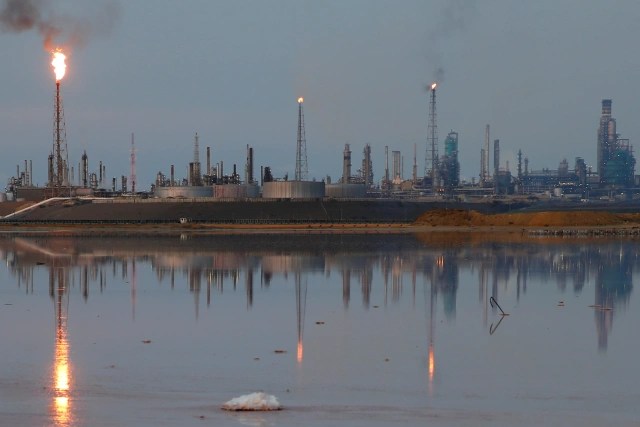
In the Paraguaná Peninsula, Falcón State, where the Paraguaná Refining Complex (CRP) is located, the largest in Venezuela and which mainly produces fuel, the supply of subsidized gasoline in the few service stations that offer this modality has decreased almost half in the last two weeks. This has caused drivers to spend up to three days in line to stock up on fuel.
By La Patilla
Mar 16, 2023
Lapatilla.com confirmed with the managers of several service stations that during the last two weeks the delivery of fuel has been falling: from 28,000 liters that they received daily, down to 13,000 liters and then to 7,000 liters, all depending on what type of users attend the service stations.
Such is the case of the Texaco service station, located in Puerta Maraven in Carirubana Municipality, which since this week only supplies the vehicles of PDVSA workers included in a list managed by the state oil company. This implies that half of the fuel that arrives at that service station is to serve the oil workers.
At the Barboza service station, which is also located in the Carirubana Municipality, between 10,000 and 13,000 liters per day are received, because in the afternoons they serve the oil worker’s lists with 40 liters per vehicle. In the case of Brisas de Paraguaná, located in Caja de Agua, this week they received between 6,000 and 9,000 daily, although they have not been able to give service the people in line normally, because there have been many failures with electricity and the service station does not have an electrical power plant.
Without electricity there is no gasoline
“Put me the 10, here under the radio,” an official from the Bolivarian National Guard told a user who forced to pay 10 dollars to fill 40 liters of gasoline without queuing at the Brisas de Paraguaná service station. In waiting there were about 200 vehicles in the surroundings of the service station and organized in a long winding queue.
Humberto Sánchez, a resident of Punto Fijo, had been in line since last Tuesday. “I arrived at the queue on Tuesday and it is only until today (Thursday) in the morning that I am going to pass. Yesterday they only serviced 40 cars, because the power went out all afternoon; The day before yesterday the power also went out and only a few attended. They reopened from 6:00 to 9:00 at night and a little more refilled. Yesterday when we closed the queue, I was 24, today I was 62. Imagine how many cars cut up in the queue in front of me. This is not counting the fact that tanker trucks, toteros and other cars pay to avoid queuing and come in through the other entrance,” he said.
Dollarized service stations have no queues
The service stations that offer the sale of fuel at international prices (0.5 US cents per liter) don’t have a queue of vehicles.
The managers informed lapatilla.com that Pdvsa supplies them depending on the requirements of each service station. It was learned that it is not much fuel, because it is not sold in large quantities, that is, they receive fuel only two or three times a week.
What is known about production?
According to oil workers at the Amuay and Cardón refineries, the fuel production process is paralyzed in both refineries. In Amuay, the catalytic cracker has been paralyzed for two weeks due to mandatory maintenance, while the Cardón catalytic plant “is working halfway.”
These plants are essential for the production of fuel. However, what is being distributed is the fuel in storage, said the oil workers who preferred not to be identified.
…
Read More: La Patilla – The only thing they produce in Amuay and Cardón are problems… because gasoline STILL NOTHING
…

